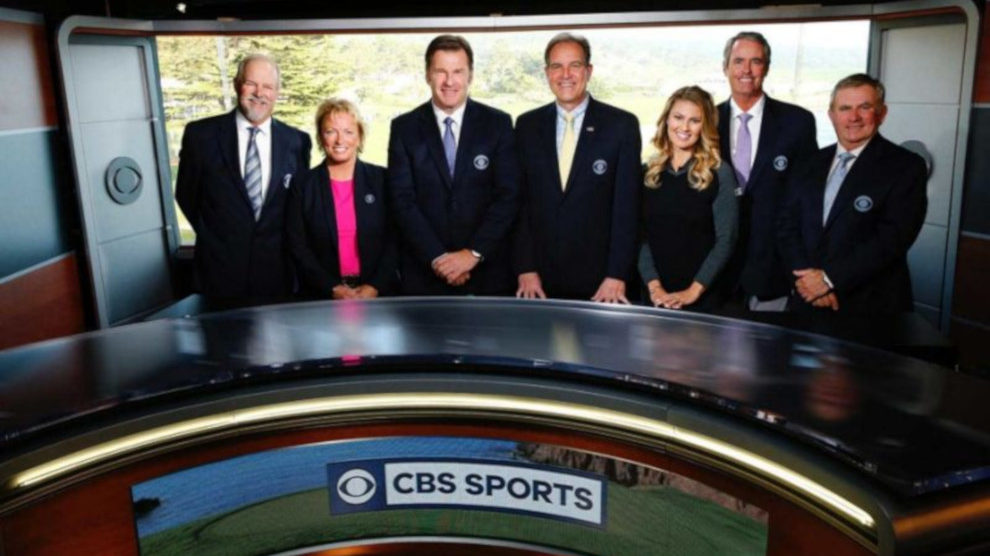As the PGA Tour returned to our screens last week at the Charles Schwab Challenge, the TV coverage looked and sounded a little different from normal.
Before the coronavirus pandemic, nobody could have imagined that tournament happening with no fans in attendance and a ‘confession cam’ which players visited to answer questions mid-round. There was even a long-overdue attempt to mic up players, although it turned out to be a flop.
It remains to be seen which innovations will stick around, but the changes have put the quality of golf broadcasts in the US into sharper focus than ever before.
If you inhabit the golf Twittersphere, you may have noticed that complaining about golf broadcasts is almost as much of a sport as the game of golf itself. I knew about this before I emigrated from the UK to the US last year, so I was curious to see what all the fuss was about.
Before the pandemic brought an enforced hiatus to the PGA Tour in March, I had the chance to sample these infamous broadcasts for myself through the West Coast and Florida swings. To some extent, I can understand (and I share) the frustrations of many American golf fans. Having to endure nearly 20 minutes of commercials per hour maybe wouldn’t feel so bad if you felt like the other 40 minutes were packed full of actual golf coverage. Instead, plenty of airtime is consumed by various gimmicks and formalities to please sponsors, even though the value of these interventions to you, the viewer, is negligible at best. After all, someone has to be funding those purses. Sometimes it feels as if you could try to count the number of golf shots you see between commercial breaks and you may not need more than the fingers of one hand.
So am I going to join the grumbling masses on Twitter with hot takes on how terrible the broadcasts are? Maybe, but if I do, it’ll always be with a competing thought in my mind: I’m still grateful that the coverage exists.
Back in Britain, live sports have been in retreat on TV for two or three decades. They’re still shown, but mainly on subscription-only channels such as Sky Sports. I’m just about old enough to remember being able to sit down in front of the TV at the weekend and watch several hours of high-quality live sports on the BBC. That was in the 1990s. Slowly but surely, however, the BBC has lost the rights to show most sports, as its public funding model simply can’t compete with the likes of Sky.
The BBC’s golf coverage, in particular, has been noticeably cut back even in recent years. For as long as I can remember, you used to be able to rely on getting wall-to-wall Open Championship coverage every July and a good dose of the Masters in April. Now, the BBC only has Open Championship highlights – the last time it broadcast the event live was in 2015 – and last November, it was announced that it would have no live Masters coverage going forward either.
Around the same time, the last episode of the BBC’s golf podcast, "The Cut," went out. There are apparently no plans to bring it back.
Now, it may be that the BBC didn’t fight that hard to keep its golf deals because they weren’t bringing in the ratings. Despite its historical pedigree, golf is a much more niche sport in the UK than in the US. But, as good as the Sky coverage might be – and it’s true that they do a better job of showing more shots and filling breaks in coverage with value-adding content – it won’t ever attract a wide audience on a subscription-only channel compared to the ubiquitous BBC. In 2016, Sky’s first year of broadcasting the Open, viewing figures plunged by 75 percent. Even though getting a subscription to Sky Sports Golf (these days, the channels are carved up by sport) isn’t ruinously expensive, it might be hard to justify the extra expense in the family budget for that all-important final round of the Rocket Mortgage Classic.
In 2020, the idea of a major, non-subscription British TV station airing six hours of golf coverage each weekend, especially for non-major tournaments, for large chunks of the year, would be laughable. Contrast that to the veritable feast of golf on offer in the US every weekend, which for many people can be accessed through a $25 antenna, no cable subscription required (which is what I do).
So yes, the US networks’ golf broadcasts might be painfully sparse in actual golf shots and saturated with corporate spin; and yes, they may often take themselves a little too seriously while simultaneously missing the best storylines out on the course. But at least golf has a significant media presence in the US. At least the next generation of golfers can turn on the TV and watch their heroes in action each week without having to battle their parents to upgrade their cable package.
As we emerge from what has felt like an eternity without golf, maybe we can take a moment to be grateful for the exposure that the game we love has in this country. And then get back to roasting the broadcasts on Twitter.

